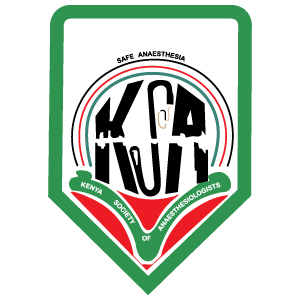 The 16th of October marks the 171st anniversary to the day, when a major milestone in the medical field was made to relieve man of pain.
The 16th of October marks the 171st anniversary to the day, when a major milestone in the medical field was made to relieve man of pain.
It is interesting that the success of a surgery is often judged by the measure of post op surgery comfort/ discomfort or pain. The most unfortunate thing is that, however, very few people know that the task of making sure they are painlessly looked after before, during and after surgery is the responsibility of the anaesthesiologists and not the surgeon. Anaesthesiologists provide care after surgical, therapeutic, diagnostic and obstetrical procedures. They also provide pain management and emergency services, such as airway management.
As we mark World Anaesthesia Day, we aim to demystify the mystery that clouds these masked individuals who are highly trained and medically qualified professionals whose role in the theatre is more often than not overlooked and underappreciated.
In Kenya, The Kenya Society of Anaesthesiologists (KSA) is a professional organization whose membership is open to qualified Anaesthesiologists working in Kenya and currently stands at one hundred and sixty (160). The society is affiliated to the International World Federation of Societies of Anaesthesiologists (WFSA) and the Kenya Society of Professionals. Our mandate is to promote and encourage the Science and Art of Good Anaesthetic practice in Kenya; and recommend and ensure that the Standards of Training and Practice of Anaesthesia measure up to International Standards. Today, we’ll take baby steps and unmask our faces to the public, letting you know we exist. We believe that next year, when we next commemorate the joy of painless surgery, you will comfortably pronounce “anaesthesiologists”.
The theme of the World Anaesthesia Day this year is Count Me In!, an initiative to unite anaesthesia providers on World Anaesthesia Day and focus on raising awareness and support for scaling-up “human resources for anaesthesia”. As of 2017, the number has increased to 50 anaesthesiologists in public service out of about 160 anaesthesiologists in practice, in the country; 77% of whom are in Nairobi County. 33 out of 47 counties, have 0 consultant anaesthesiologist. In fact, the shortage of anesthesia providers to assist during deliveries has exacerbated the issue of maternal and infant mortality; improperly administered anesthesia, or complete lack of anesthesia, is one of the top four causes of death in rural hospitals among maternal patients during labor.
The Ministry of Health recommends that each of the approximately 300 health institutions in the country should have 3 anaesthesia providers per theatre (for 8 hours a day). Level 4 hospitals have a minimum of 2 theatres; maternity and general theatres while Level 5 hospital have a minimum of 7 theatres; specialized procedures. All in all, a minimum of 1800 anaesthesia providers required, while only 600 are available. Meaning that we are currently operating at 30% capacity.
Anaesthesia services in Kenya are provided by three cadres of practitioners;
- Physician anaesthesiologists, these are medical doctors who first train as medical officers for six years undergraduate. After registration as Medical Officers, four years for Masters of Medicine in Anaesthesia, offered by University of Nairobi and Aga Khan University Hospital.
- Registered Clinical Officers Anaesthetists (RCOs), are diploma graduates in clinical medicine from Kenya Medical Training College (KMTC) and then pursue Higher Diploma in Anaesthesia for eighteen months (18) months, offered in a few KMTCs, like in Nakuru, Nairobi, Kisumu.
- Kenya Registered Nurse Anaesthetists (KRNA), who are also diploma graduates in nursing, they also pursue a higher diploma in Anaesthesia. There are currently two training institutions, Kijabe Hospital and Kisumu KMTC.
Impact of having readily available and highly qualified practitioners will ultimately result in improved healthcare and economy. The World Health Organisation (WHO), which states that good health is linked to economic growth through higher labour productivity, demographic changes and educational attainment, observes that the converse is also true.
To achieve vision 2030, access to safe anaesthesia which translates to Safe Obstetric and Trauma Surgery, is prime. Specialist surgery and surgery at age extremes (neonatal and geriatric) plus critical care also need safe anesthesia; these will ultimately promote medical tourism (region) as well as to save on forex for many surgical procedures.
The World Federation of Societies of Anaesthesiologists, WFSA, recently launched Global Anaesthesia Workforce Map, which was created by surveying anaesthesia providers around the world and highlights the anaesthesia workforce shortage crisis. Using current population data, more than 136,000 physician anaesthesia providers are needed today to achieve a minimum density of 5 per 100,000 population in all countries. This World Anaesthesia Day we would like to invite you to share your support for the scale-up of the anaesthesia workforce here

